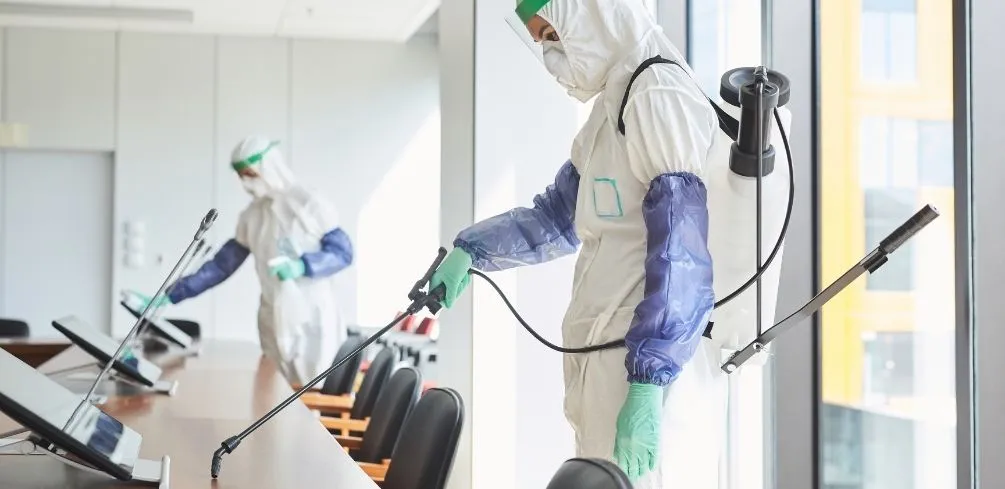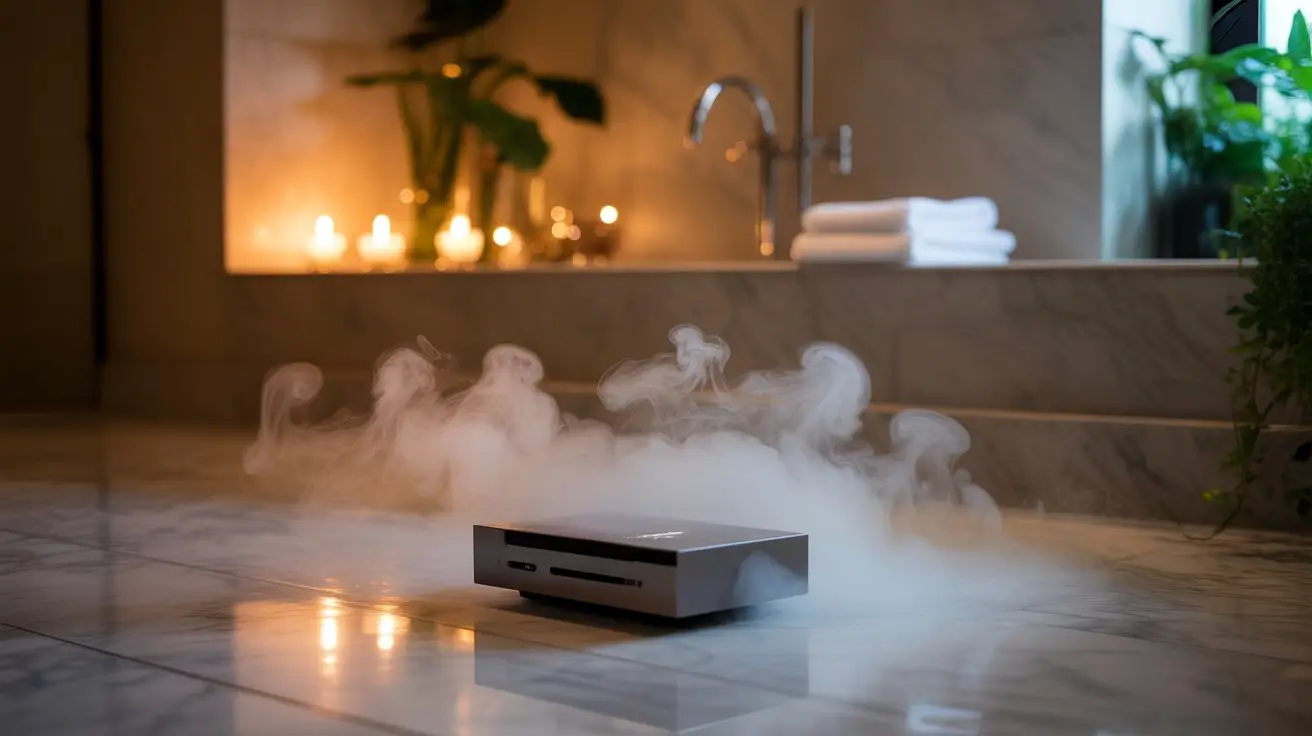Cold fogging is a method for disinfecting large and small spaces by producing tiny droplets and does not require heat to form the fog. It uses an exceptional machine that pushes the hypochlorous solution past the nozzles of the fogger. The mist formed is not very evident, but that does not make it unproductive.
In this post, I will be discussing cold fogging, cold foggers and how they work their benefits and disadvantages. Read through to discover why it may be your best option for disinfection.
What Is Cold Fogging?
Cold fogging refers to a sterilization method commonly used to control pests and molds using pressure machines called foggers. The special foggers pump the acid mixed with stabilizers out through structures called nozzles to prevent evaporation.
The nozzles can be adjusted to different sizes to regulate the size of the fog. Cold fogging is, therefore, essential when disinfection a large area.
The foggers come in different sizes, with the portables used in households and the larger ones used in the open area to cover a larger area.
How Do Cold Floggers Work?
The flogger has an electric motor that serves as the flogger’s principal part. The electric motor dictates the amount of airflow. The tank can be attached to the bottom of the fogger.
The tank stores the solution.
Since most cold foggers are fully automatic, a power source is required; technicians can use a battery or electricity. Electricity switches on a motor to pump fog from the tank to the nozzles. Thus, mist is pressurized out through the nozzles.
Benefits of Cold Fogging
The fog contains very tiny particles that quickly scatter in a room, which means those areas that the hand cannot reach are easily decontaminated by the solution, thus reducing the time taken to clean.
Unlike the other fogging methods, cold fogging is automatic and does not necessarily require a human being to operate the machine. The specialist only positions the device and switches it on. Having started the fogger, the technician may leave the room, and the fog would spread in the entire room.
The fogger has different nozzle sizes, easily adjustable to form tiny particles. Depending on where you are cold fogging, smaller fog particles would be efficient in penetrating cramped spaces, while large fog particle settings would be systematic for open space.
Sound levels are low compared to other fogging methods, such as thermal fogging; this makes it an ideal option in the urban locality where noise is a severe matter.
Even fog dispersal is used in greenhouses by correctly mixing the solution and oil stabilizers to minimize evaporation. The fog can remain in the air for a long time.
Cold fogging has no leakage losses. The insects are displayed to the fog for a longer time, thus achieving excellent penetration, diffusion, and crop leaves; therefore, t when they ingest or contact mist, the insects die.
The cold floggers manufacture microscopic fog, the fog, therefore, can be used in crowdy places and the technicians are sure it can not cause any accidents entailing vehicles or motorbikes.
Specialists can use the fog for sanitization purposes.
Cold floggers use electricity in place of propane fuel than other floggers use. Therefore, it makes it cheaper to use, low fire hazardous to operators, and since the fog has no scent, this makes the cold foggers user-friendly.
Cold fogging produces small-sized particles, which ensures small amounts of leftovers are on the surface. People owning businesses may require increasing hygiene levels through fogging; therefore, choosing cold fogging may make a difference in your organization or company.
Disadvantages of Cold Flogging
The microscopic fog is strenuous in detecting its direction flow because it is barely visible, mostly when fogging open air to control mosquitoes. For instance, you are fogging and they are strong winds, the fog may drift apart to the unintended zone.
There are also risks of inhaling the fog by passers-by because the mist is invisible; it might as well come into contact with their skin. Inhaling the smoke might result in breathing problems because the lungs could be exposed to the fog, thus resulting in coughs.
Cold fogging requires competent skills to maintain and repair. They have different systems such as pressure pumps and electric motors that need a professional to correct.
Cold foggers produce bigger particles than thermal foggers; the fog will not outstretch to confined places. For example, controlling the mosquitoes, the large-sized particles remain in the air for a shorter time, thus leaving a slight possibility of eliminating all the mosquitoes.
Most cold foggers are smaller than thermal foggers; therefore, they take a prettier time to spray a similar proportion because of the tiny insect solution volume. Hence this makes cold floggers slower.
Safety Precaution Measures When Using a Cold Fogger
- Attentively select the fog and carefully read the instructions on disinfecting: Select solutions that give guidelines on how you should use them.
- Scrub the exterior surface before cold fogging: It is advisable to clean the surface before you embark on fogging.
- The professionals only should practice cold fogging. Only trained individuals should carry out fogging to avoid health problems that may result from mishandling the solutions involved.
- Trained personnel should use Personal protective clothing to improve their safety; these clothes protect one from exposure to fog.
- Uttermost care should be involved, primarily where children and food are concerned.: When fogging crowded places, people should be aware of restraining their children and covering food.
Final Thoughts
We have been asking ourselves, what is cold fogging? We have also discussed the advantages and disadvantages of cold fogging and how it works; therefore, consider the solutions we have given by choosing it as your ideal option.
If the problems reoccur, consider contacting professional operators to solve and repair your fogger.
Please be careful and use at your own risk
None of the authors, contributors, administrators, or anyone else connected with Wild Fog, in any way whatsoever, can be responsible for your use of the information contained in or linked from these web pages.










